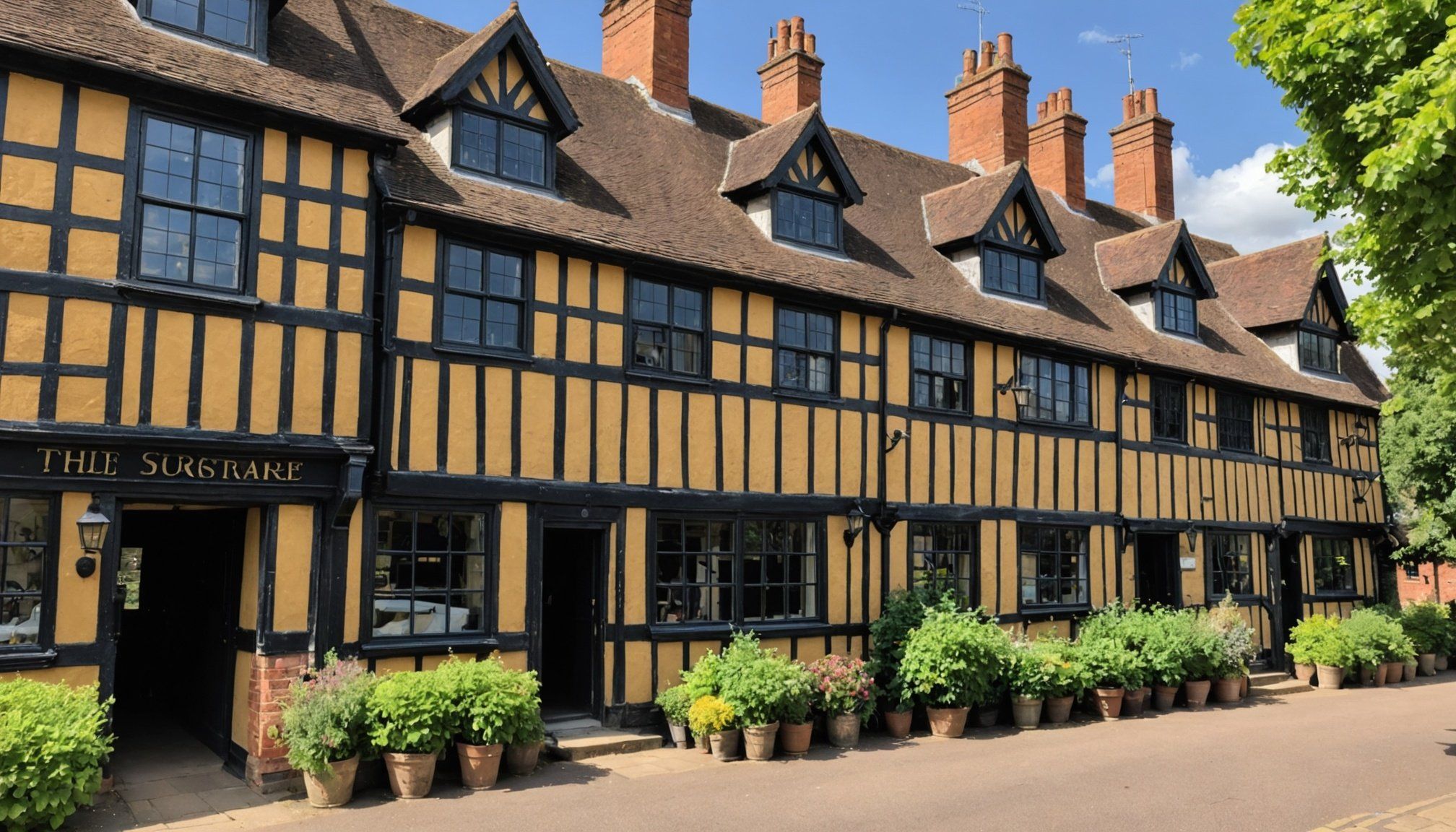Overview of Heritage Property Management Challenges
Heritage property management involves preserving sites of cultural significance to maintain their historical value while keeping them functional and accessible. In towns like Stratford-upon-Avon, known for its Shakespearean history, these sites are not just buildings; they are landmarks that narrate the town’s rich past. This presents unique challenges requiring specialized strategies.
One significant challenge in Stratford-upon-Avon is balancing the preservation of cultural heritage with modern demands. Heritage property managers must adhere to strict standards of conservation while accommodating modern infrastructure without compromising the site’s authenticity. Additionally, the influx of tourists necessitates enhanced visitor management to safeguard these properties from wear and tear.
Also to read : Exploring the Pros and Cons of Investing in Airport-Adjacent Properties in the UK
The cultural significance of these properties heavily influences management practices. Heritage sites in areas with strong historical connections bring complexities, as each decision must consider the deep-rooted cultural impacts. Managers must work with historians and cultural experts to ensure that the conservation measures honor the historical essence of the site.
Overall, the successful management of heritage properties demands a thorough understanding of their cultural significance and the challenges posed by maintaining their integrity in the face of evolving modern demands.
This might interest you : Navigating Legal Procedures for Settling Boundary Disputes in Newly Developed Residential Communities
Regulatory Constraints in Heritage Property Management
Inherit to heritage property management are the regulatory constraints imposed by local and national legislation. These constraints are essential to ensure the preservation of cultural sites like those in Stratford-upon-Avon. Property managers often grapple with a complex web of compliance challenges, balancing legal mandates with preservation needs.
The regulations impacting heritage properties typically focus on maintaining architectural authenticity and historical integrity. These laws mandate detailed documentation and specific restoration methods, which can limit innovation and flexibility for property managers. Compliance becomes even more demanding given that any deviation might risk penalties or loss of funding. The legislation therefore acts as both a guide and a hindrance, emphasizing the significance of heritage values while often complicating management efforts.
In Stratford-upon-Avon, property managers must navigate these regulatory frameworks, considering both the cultural and legal intricacies involved. Case studies have shown that successful heritage management aligns strict adherence to compliance with innovative solutions, ensuring both the protection and functionality of these cherished sites. By understanding these regulatory impacts, managers can better plan and execute maintenance strategies that honor the past while accommodating present and future needs.
Preservation Standards and Best Practices
In heritage property management, adherence to well-established preservation standards is crucial. These standards ensure that heritage sites maintain their cultural and historical integrity while remaining accessible. In Stratford-upon-Avon, property managers are tasked with balancing modern usage with traditional conservation techniques. They must rely on detailed guidelines prescribed by conservation experts. These guidelines dictate meticulous methods like traditional craftsmanship and the use of period-appropriate materials for restoration.
Best practices in heritage property management extend beyond standard compliance. They involve proactive maintenance strategies to prevent deterioration rather than reactive repairs. Regular condition assessments and employing innovative technologies like 3D mapping for structural analysis are frequently utilized. Such practices enable accurate restoration and reduce the risk of further damage.
Expert insights from regional preservation specialists emphasize the importance of understanding the specific historical context of each site. Tailoring conservation approaches to reflect the unique stories of these sites ensures authenticity is respected. Engaging with local communities further aids in preserving their relevance in contemporary times, fostering a deeper connection to cultural heritage and ensuring these vital landmarks continue to narrate their historical tales.
Impact of Tourism on Heritage Properties
The tourism impact on heritage properties, particularly in towns like Stratford-upon-Avon, is significant due to the economic benefits it brings. Tourism drives revenue that supports local businesses and maintains the cultural heritage sites that attract visitors. However, the challenge is in ensuring visitor numbers do not compromise the integrity of these sites.
To balance visitor access with property preservation, heritage property managers implement strategies to manage tourist flow effectively. This includes timed entry systems, guided tours with limited group sizes, and enhanced visitor education programmes that emphasise the importance of preservation. These measures help mitigate potential damage while maintaining an enjoyable visitor experience.
Economic considerations are key when assessing tourism’s role in heritage management. While tourism provides important funding for conservation, it also requires investment in infrastructure and maintenance. Property managers must develop sustainable practices that protect the site’s authenticity while accommodating its popular demand. These include regular assessments of visitor capacity and conservation status, as well as promoting off-peak visits to reduce stress on the sites.
Ultimately, with the correct approach, tourism can be an ally in the preservation and continuation of cultural heritage for future generations.
Financial Considerations in Heritage Property Management
In managing heritage properties, financial challenges are a prominent concern. It requires careful funding allocations to preserve the cultural and historical value while ensuring structural stability. Managers must navigate tight budgets, often relying on governmental grants and alternative funding sources for heritage conservation projects.
Various funding opportunities exist, yet securing these can be competitive and complex. Heritage projects might draw support from local councils, national heritage bodies, and even private sectors. These funds aid restoration efforts, enabling improvements without compromising the authenticity of the site. Innovative partnerships with businesses can also offer financial support, often highlighting corporate social responsibility initiatives.
Long-term financial planning is essential for sustainable heritage management. This involves developing comprehensive budgets that account for regular maintenance, unforeseen repairs, and the integration of modern technologies for conservation. Additionally, investing in marketing to increase visitor engagement generates revenue, aiding financial stability.
Ultimately, effective financial planning, coupled with diverse funding avenues, ensures the continued conservation and enhancement of heritage properties. Ensuring an ongoing dialogue with potential donors and stakeholders fosters a supportive financial ecosystem capable of sustaining heritage property objectives.
Case Studies of Successful Heritage Property Management
Examining case studies of successful heritage property management in Stratford-upon-Avon reveals practical applications of best practices that balance preservation and functionality. One striking example involves a heritage property manager who effectively integrated modern technology with traditional methods. This blend allowed the renovation of an original Elizabethan structure while preserving its historical integrity.
Lessons learned from these case studies include the importance of ongoing collaboration with conservation experts to develop strategies tailored to each property’s unique cultural and historical context. By understanding the specific local traditions and histories, managers can apply solutions that honour the past while enabling contemporary use.
Most notably, these successful cases highlight the significance of proactive maintenance and community engagement. Managers foster relationships with local residents and businesses, ensuring that sustainable heritage conservation aligns with community interests. This approach not only secures local support but also leverages additional resources and expertise.
Recommendations for other heritage properties include prioritising regular assessments and adapting strategies based on insights gained from successful implementations. By learning from challenges, such as regulatory compliance and financial constraints, property managers can enhance operational efficiency and ensure enduring cultural value.
Local Legislation Affecting Heritage Property Management
Local legislation significantly impacts heritage conservation laws, especially in culturally rich areas like Stratford-upon-Avon. These laws are designed to safeguard the historical significance of heritage properties by dictating specific preservation methodologies that property managers must follow. Such legislation ensures the cultural heritage is maintained for future generations. However, it often presents challenges, particularly when property rights clash with preservation requirements.
In Stratford-upon-Avon, property owners may face restrictions that limit alterations or usage to preserve the historical authenticity of their properties. This can lead to conflicts between maintaining the site’s aesthetic and cultural value and the rights of property owners to modify or utilise their estates as they see fit.
The implications of local legislation require careful strategy development for future heritage management. Property managers must meticulously balance compliance with conservation laws while advocating for flexible solutions that reconcile preservation needs with property rights. Collaborative dialogue with local authorities and cultural organizations can help navigate these complex issues, ensuring that the heritage management enhances the cultural richness of Stratford-upon-Avon while respecting the interests and rights of property owners.
Community Engagement and Stakeholder Involvement
Engaging the community and involving stakeholders are pivotal in heritage property management. Their involvement ensures that preservation efforts resonate with local values and priorities. Strategies focused on community engagement can include open forums, heritage workshops, and collaborative planning sessions, which foster a sense of ownership and responsibility towards heritage sites.
Local stakeholders, including business owners, residents, and cultural organisations, provide valuable insights that can shape effective management strategies. By involving them in discussions about the maintenance and conservation of heritage properties, managers can facilitate diverse perspectives that integrate local awareness with conservation objectives. This approach enhances not only the relevance of the initiatives but also the practical aspects of preservation efforts.
Community support significantly impacts the success of heritage preservation. When residents and stakeholders actively participate, they are more likely to advocate for funding, volunteer time, and promote sustainable tourism practices. This grassroots participation amplifies the economic benefits derived from tourism while ensuring that the cultural heritage is preserved for future generations. Strong ties with the community therefore create a supportive environment for heritage site conservation, motivating continued engagement and collaboration in heritage property management.











